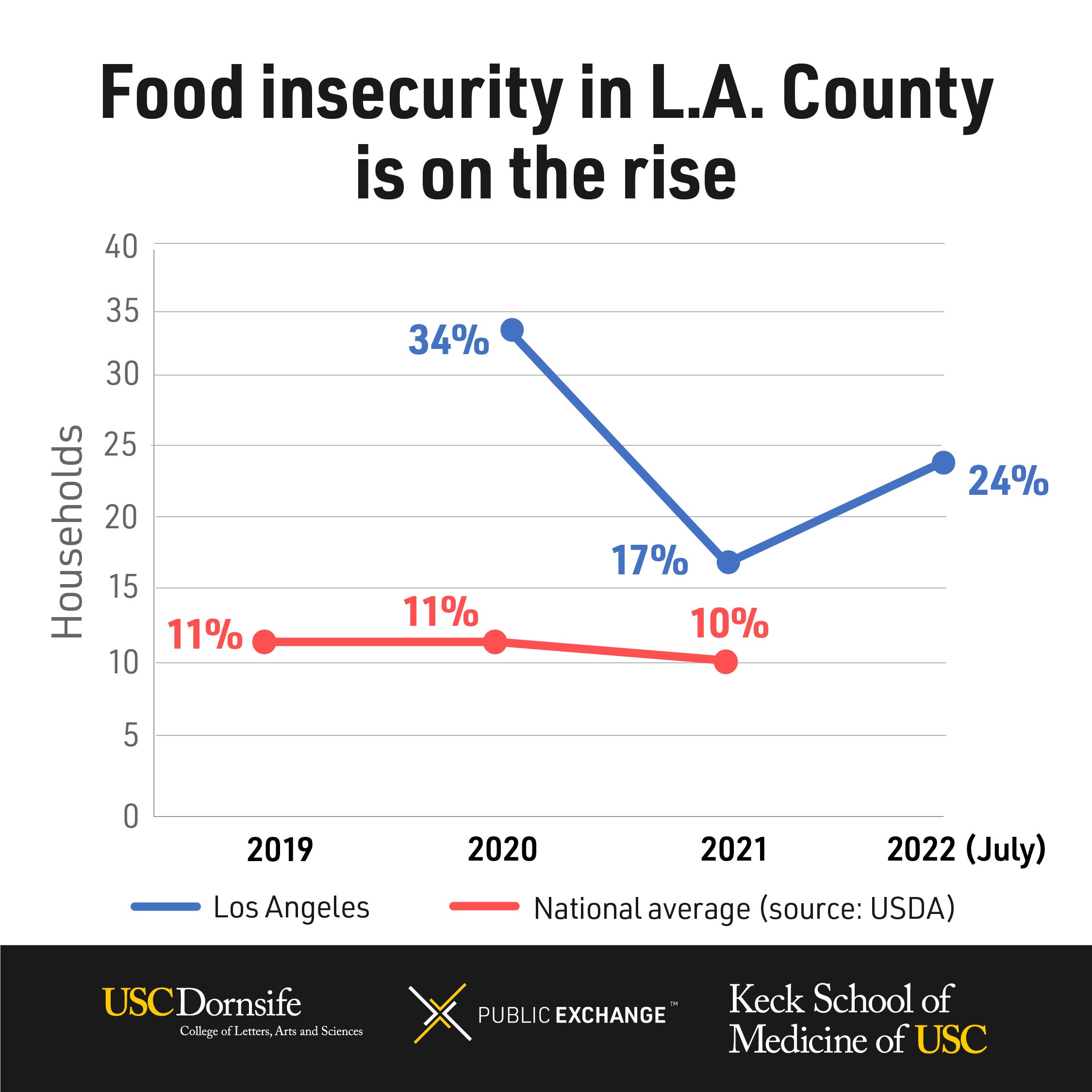
Rates of food insecurity in L.A. are spiking after sharp decline
More than 800,000 Los Angeles County households — nearly a quarter of the total (24%) — experienced food insecurity over the 12 months ending July 2022, up from 17% in 2021. This follows a sharp drop from 34% in 2020, according to a new study released by Public Exchange at the USC Dornsife College of Letters, Arts and Sciences and funded by the National Science Foundation. The research team included faculty from the Keck School of Medicine of USC, USC Dornsife Spatial Sciences Institute and USC Price School of Public Policy.
“Any notion that we’re largely ‘out of the woods’ with regard to the problem of hunger in Los Angeles is sadly off base,” said lead researcher Kayla de la Haye, associate professor of population and public health sciences at the Keck School of Medicine of USC. “Some of the Angelenos most impacted are Latinos, young adults and families with kids.”

L.A. County has had notably higher rates of food insecurity than other areas. For the previous three years, average rates of food insecurity for the nation and California have remained steady at 10 – 11%, according to the U.S. Department of Agriculture. National and statewide data for this year aren’t yet available.
Food insecurity is defined as a disruption in regular eating because of limited money or other resources.
De la Haye believes inflation is a significant factor contributing to the growing number of Angelenos struggling to afford food. Food prices nationally have gone up 9% in 2022, according to the U.S. Department of Agriculture. More than 4 out of 10 study participants in L.A. County said they bought less food this year because of the rise of food and grocery prices, while 38% said that to save money, they bought foods that were lesser in quality.
About the Study
The study participants are from the Understanding America Study (UAS), a probability-based internet panel administered in English and Spanish by the USC Dornsife Center for Economic and Social Research. The study sample is representative of all L.A. County households and the weighted sample size ranged from 1,135 – 1,176 participants (18 years or older). Tracking survey waves were conducted between April 2020 and August 2022.
This study from Public Exchange at the USC Dornsife College of Letters, Arts and Sciences was led by Kayla de la Haye with the Keck School of Medicine of USC and supported by John Wilson with the USC Dornsife Spatial Sciences Institute and Wändi Bruine de Bruin at the USC Price School of Public Policy, funded by a grant from the National Science Foundation (Grant #2125616, Smart & Connected Community Food Systems, PI: de la Haye).